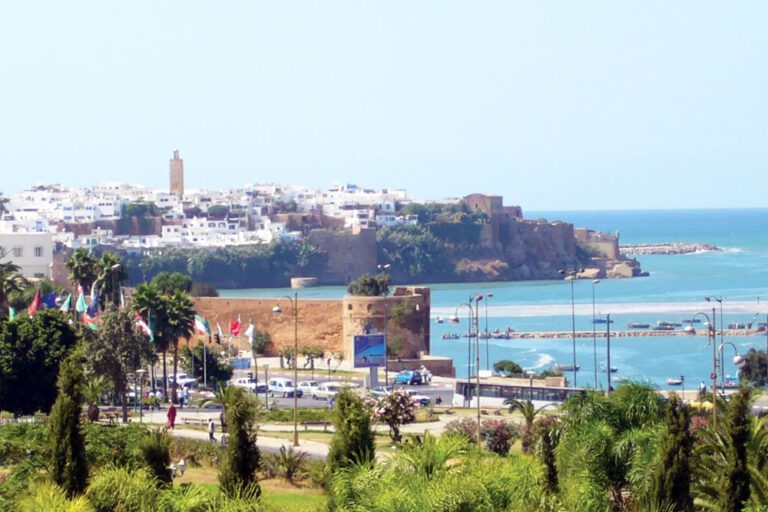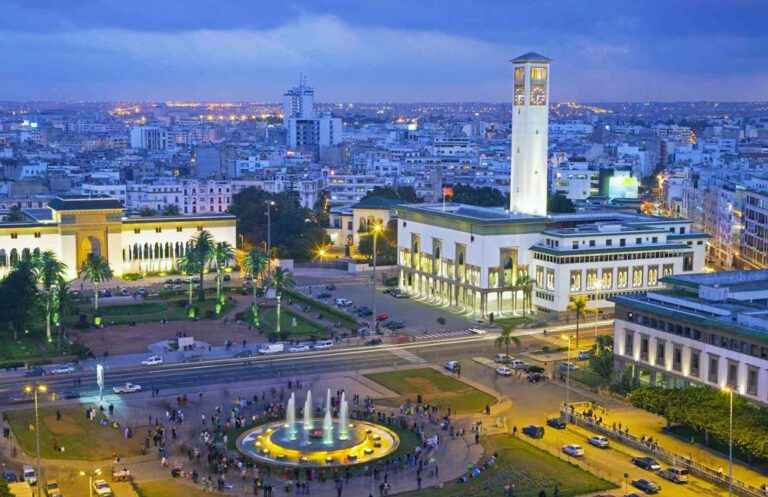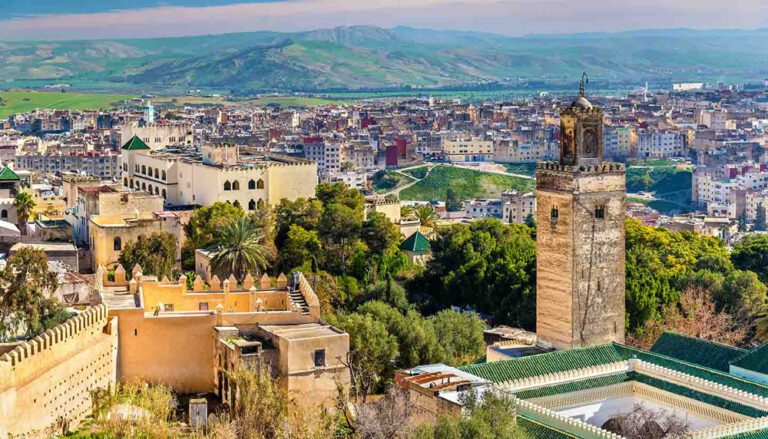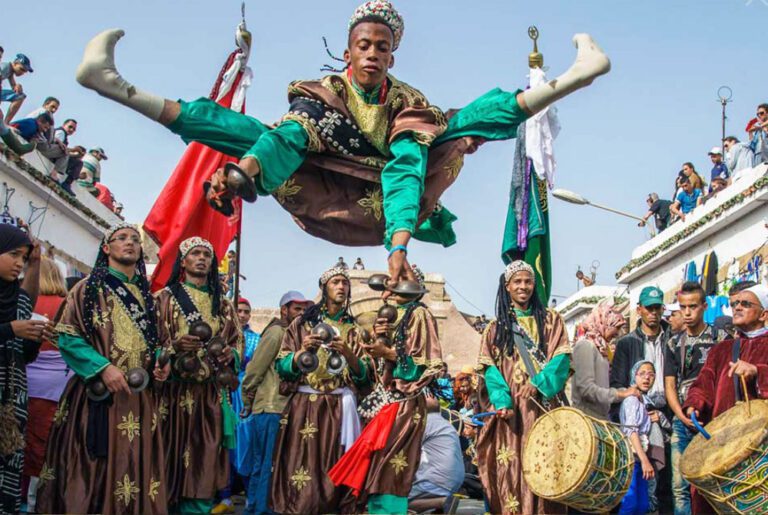Explore Marrakech: 10 Must-See Attractions & Activities
Last updated on June 24th, 2023 at 05:51 pm

Marrakech is a vibrant city located in the heart of Morocco. Known as the “Red City” due to its red walls and buildings, Marrakech is a bustling destination that combines traditional Moroccan culture with modern amenities.
Visitors can explore the city’s winding streets and alleys, discover its historic landmarks, sample its flavorful cuisine, and immerse themselves in the vibrant local culture.
Marrakech is a must-visit destination for anyone looking for an unforgettable travel experience in North Africa. Here are 10 must-see attractions and activities in Marrakech that you won’t want to miss.
1. Koutoubia Mosque
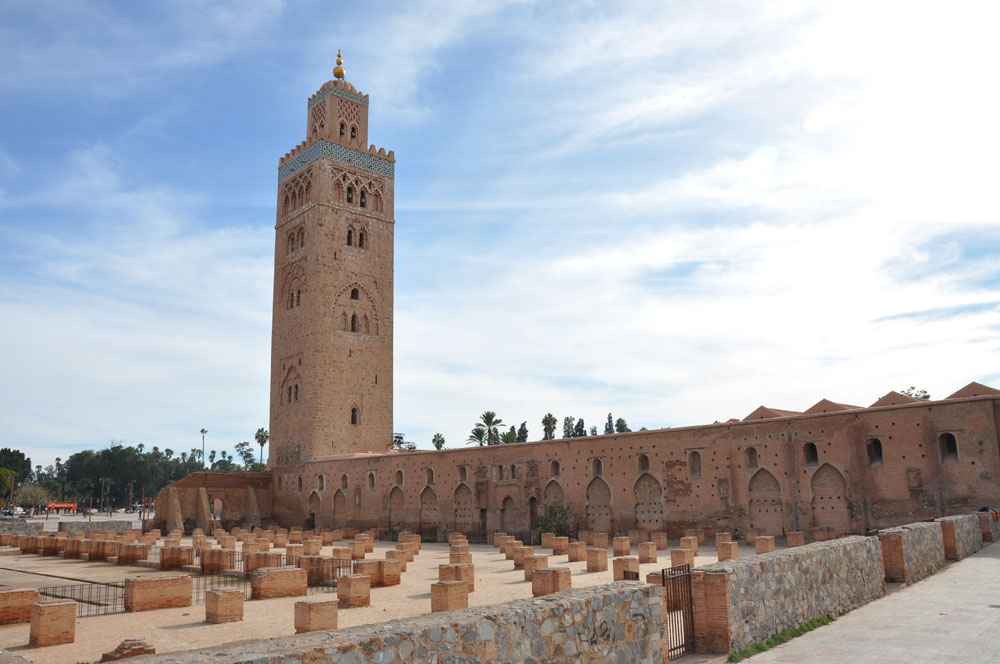
The Koutoubia Mosque is an iconic structure that has become a symbol of the city. Built in the 12th century, it stands 77 meters tall and is one of the largest mosques in North Africa. The design of the mosque is unique, with its towering minaret, ornate interior, and intricate details on the exterior.
The mosque’s name comes from the Arabic word for booksellers, as it was once surrounded by book stalls. Inside the mosque, the arches and columns are decorated with beautiful geometric designs, and the walls are adorned with gorgeous tilework.
The mosque is a popular spot for locals and tourists alike and is a great place to get a glimpse of Moroccan culture and architecture. Visitors can admire the intricate details of the architecture and take in the atmosphere of the mosque’s spiritual side.
The Koutoubia Mosque is a must-see for anyone visiting Morocco and is a great way to experience the unique beauty and culture of the country.
2. The Souks of Marrakech
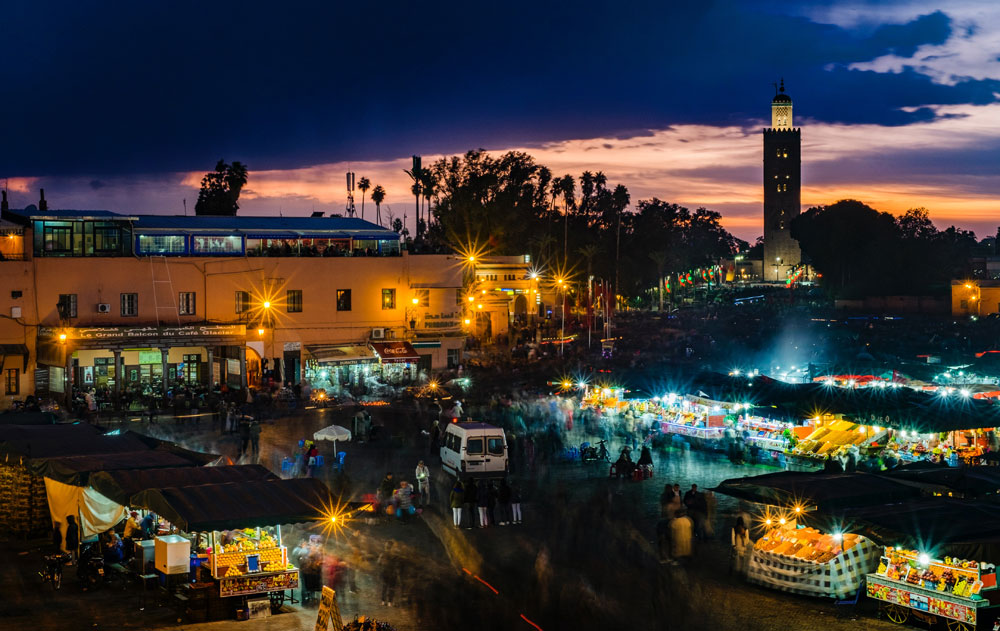
The Souks of Marrakech are a sprawling network of traditional markets and bazaars located in the city’s historic Medina.
The souks have been an important part of Marrakech’s economy for centuries, serving as a hub for trade and commerce throughout the region. Traders and merchants from all over North Africa and the Middle East would come to the souks to buy and sell goods, making it a hub of cultural exchange and innovation.
The three main souks in Marrakech are Souk Semmarine, Souk El-Kebir, and Souk Cherratine.
Souk Semmarine is the most popular and busiest souk in Marrakech, selling a variety of traditional clothing, textiles, and souvenirs. It is located near the famous Jemaa el-Fnaa square and you can explore the colorful stalls and shops selling everything from traditional Moroccan clothing and jewelry to spices, perfumes, and souvenirs.
Souk El-Kebir is another large souk located in the heart of the Medina. It is known for its bustling atmosphere, colorful displays, and traditional Moroccan goods. As you wander through the narrow alleys and streets of the souk, taking in the sights and sounds of this historic marketplace you will find spices, perfumes, and a wide variety of traditional Moroccan products such as tagines, tea sets, and ceramic.
Last but not least is the Souk Cherratine known for its high-quality leather products, such as bags, shoes, jackets, and other accessories. One of the highlights of Souk Cherratine is the opportunity to watch as leatherworkers craft products by hand, using traditional techniques that have been passed down through generations.
Together, these three souks offer visitors a unique and unforgettable shopping experience. Visitors can immerse themselves in the bustling atmosphere of the souks, haggle with vendors, and take home beautiful souvenirs of their time in Marrakech.
3. El Badi Palace
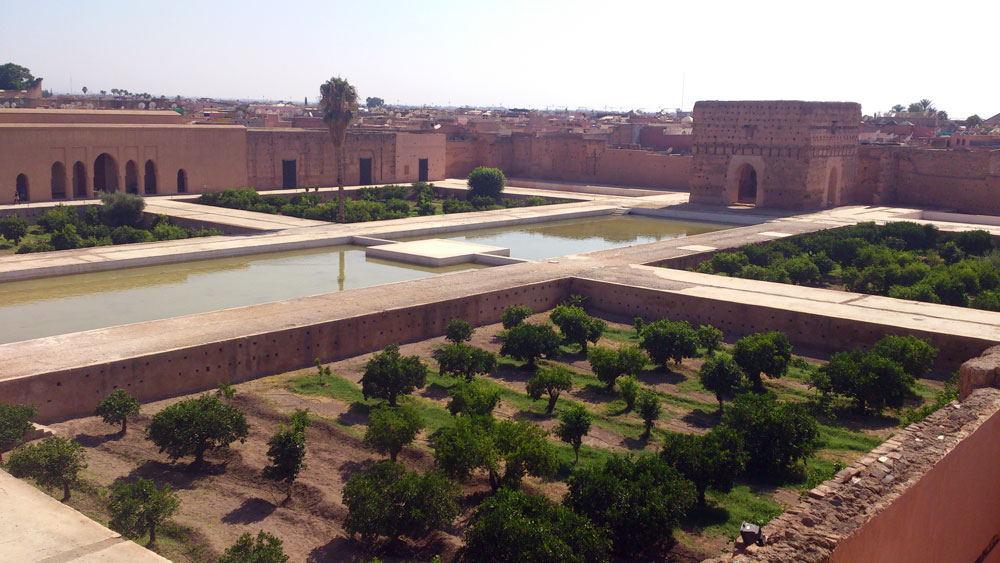
El Badi Palace is a stunning monument in Marrakech, Morocco. It was built by the Saadian Sultan Ahmad al-Mansur in the late 16th century and was a symbol of the wealth and power of the Sultan.
The palace was built with the finest quality materials, with walls made of marble and onyx, intricately carved, and decorated with gold and semi-precious stones. The palace has a total of 360 rooms and was filled with lush gardens and fountains.
Today, you can explore the ruins of the palace, which still retain much of its grandeur and beauty.
One of the highlights of El Badi Palace is the panoramic view it offers of Marrakech. From the palace’s rooftop terrace, you can enjoy stunning views of the city’s skyline, including the Koutoubia Mosque and the Atlas Mountains in the distance.
Overall, El Badi Palace is a must-see destination for anyone interested in history, architecture, and culture and it offers a fascinating glimpse into the opulent world of the Saadian dynasty and the grandeur of imperial Morocco.
4. The Tanneries
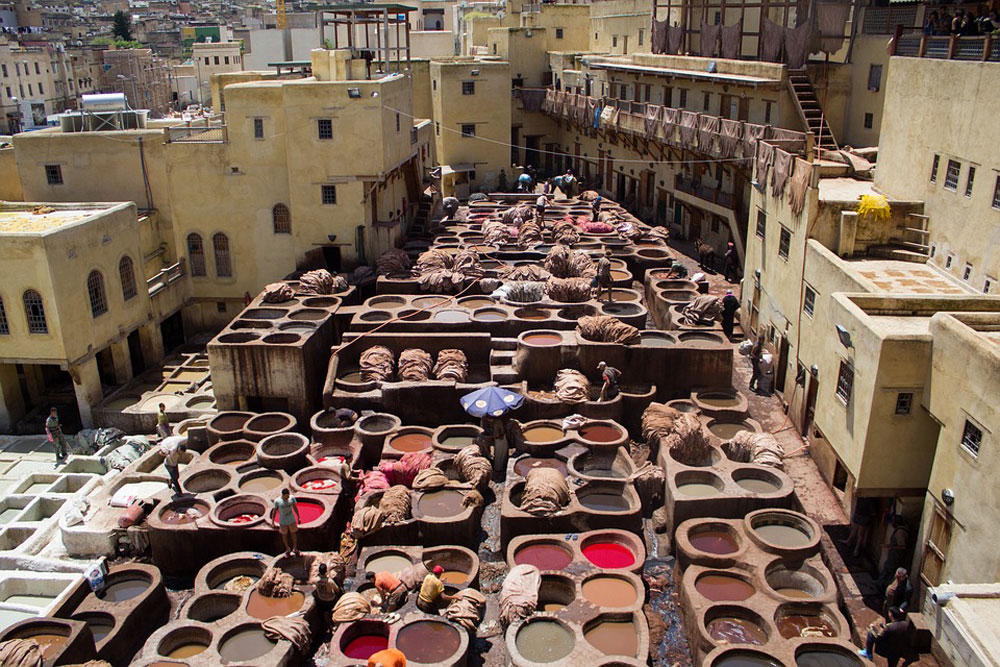
The tanneries of Marrakech are some of the oldest and most traditional in the world. They have been in operation since the 11th century and offer a fascinating glimpse into the city’s historic leather industry.
A visit to the tanneries offers you a unique and unforgettable opportunity to see traditional leatherworking techniques in action and learn about the history and culture of this important industry.
You can watch as the leatherworkers process animal hides using traditional methods, including soaking them in vats of dye made from natural materials like saffron and indigo.
The sight of the artisans working is truly something to behold. However, the process can be somewhat overwhelming due to the strong smells, but guides provide you with sprigs of mint to help mask the strong smell.
The tanneries of Marrakech are renowned for their attention to detail and high quality, and it is easy to see why. Everywhere you look, there are brightly colored skins of various animals and leather goods of all shapes and sizes.
Overall, the tanneries are a must-see destination for anyone interested in leatherwork, traditional crafts, and Moroccan culture.
5. The Majorelle Garden
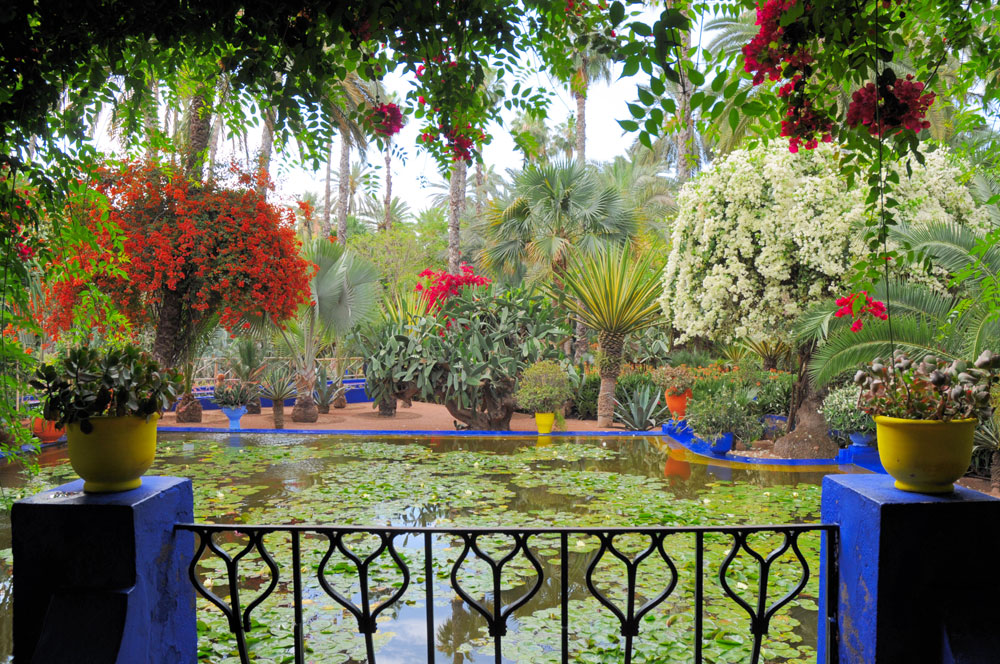
Jardin Majorelle is a botanical garden located in Marrakech, Morocco. The garden was created by the French painter Jacques Majorelle for 40 years starting in the 1920s and later purchased by the fashion designer Yves Saint Laurent in the 1980s. Today, it is one of the most popular tourist attractions in Marrakech.
The garden is open to the public, and it features a wide variety of plants, fountains, and other features, including a museum dedicated to the work of Jacques Majorelle.
Here are some of the must-see features of the garden:
Majorelle Blue Buildings
The garden is filled with buildings painted in a vivid shade of cobalt blue that was popularized by Jacques Majorelle. These buildings include the Studio, which was used by Majorelle as his painting studio, and the Love Pavilion, which was built by Yves Saint Laurent.
Cactus Garden
The garden features a large cactus garden with a variety of species from around the world and is a great place to explore and take photos.
Islamic Art Museum
The garden also features a small museum dedicated to Islamic art with a collection of artifacts from North Africa and the Middle East.
Water Features
Jardin Majorelle has several fountains and water features that add to the garden’s tranquil atmosphere. One of the most impressive features is the large reflecting pool near the entrance.
Exotic Plants
The garden is home to a wide variety of plants from around the world, including palm trees, bamboo, and exotic flowers. Visitors can explore the garden’s many paths and discover new plant species around every corner.
6. Atlas Mountains
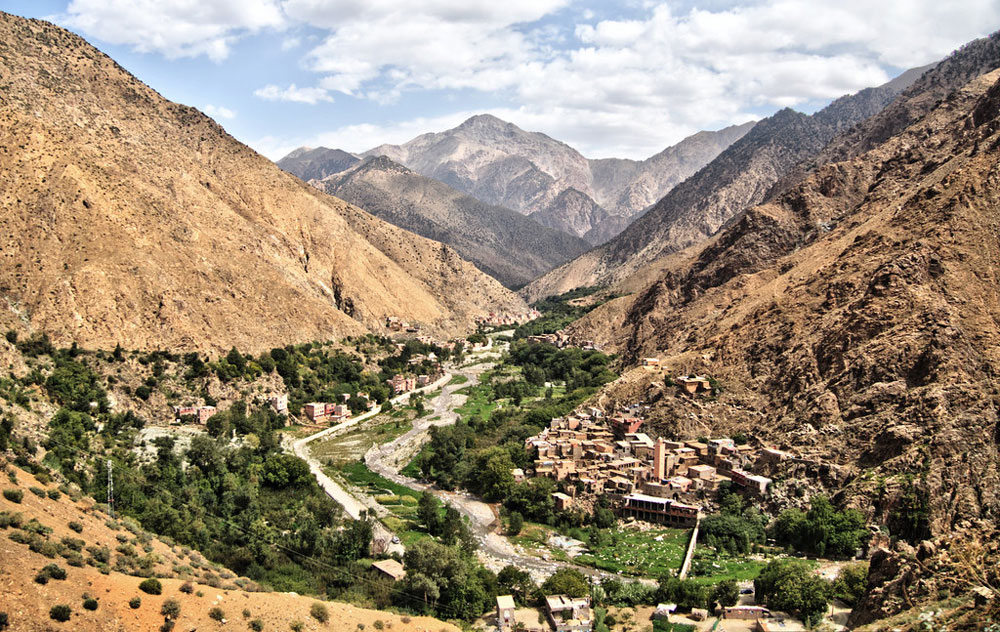
The Atlas Mountains are a range of mountains that stretch over 2,500 kilometers across northwestern Africa, covering parts of Morocco, Algeria, and Tunisia.
Known for their stunning natural beauty, rich cultural heritage, and outdoor activities the Atlas Mountains are a popular tourist destination.
You can explore the mountains’ many trails, visit traditional Berber villages, and take in the breathtaking scenery.
Here are some of the must-see attractions in the Atlas Mountains:
Toubkal National Park
This national park is home to the highest peak in North Africa, Mount Toubkal. You can hike to the summit, explore the park’s many trails, and take in the stunning scenery of the High Atlas Mountains.
Ait Benhaddou
This ancient fortified village is a UNESCO World Heritage Site and one of the most picturesque destinations in the Atlas Mountains. It features a collection of traditional earthen buildings that have been used as a backdrop in numerous Hollywood movies.
Imlil
This small village is located in the foothills of the Atlas Mountains and serves as a gateway to the Toubkal National Park. You can enjoy hiking, trekking, and mountain biking in the surrounding area.
Ourika Valley
This lush valley is a popular destination for day trips from Marrakech. It features a series of waterfalls, traditional Berber villages, and scenic hiking trails.
Tizi n’Test Pass
This mountain pass offers stunning views of the Atlas Mountains and is one of the most scenic drives in Morocco.
Ouzoud Falls
Located in the Middle Atlas Mountains, these spectacular waterfalls cascade down a series of cliffs, offering a breathtaking sight.
Whether you’re interested in hiking, culture, or simply taking in the stunning scenery, the Atlas Mountains are a must-visit destination in Morocco.
7. Djemaa El-Fna

Djemaa El-Fna is a large public square in the heart of Marrakech’s Medina or old city. The square has a long and rich history that dates back to the 11th century.
Originally, Djemaa El-Fna was a site for public executions, and it is said that the square was named after the Arabic phrase for “assembly of the dead.” However, over time, the square evolved into a bustling center of trade and commerce, where merchants and traders from across North Africa would come to sell their goods.
Here are some of the must-see sights and experiences in Djemaa El-Fna:
Street Performers
Djemaa El-Fna is known for its colorful street performers, who entertain crowds with music, dance, and acrobatics. You can watch snake charmers, fire-eaters, henna artists, and storytellers perform throughout the day and into the night.
Food Stalls
The square is also famous for its food stalls, where you can sample traditional Moroccan cuisines, such as tagine, couscous, and grilled meats. The food stalls are busiest at night when locals and tourists alike come to enjoy a meal under the stars.
Souvenirs
There are also many stalls selling souvenirs and handicrafts, such as leather goods, pottery, and textiles. You can haggle with the vendors to get the best price and find unique gifts to take home.
Museums
There are several museums located around Djemaa El-Fna, including the Marrakech Museum, which showcases Moroccan art and artifacts, and the Dar Si Said Museum, which features traditional Moroccan woodworking and crafts.
Rooftop Cafes
For a bird’s-eye view of the square, head to one of the rooftop cafes located around Djemaa El-Fna. Here you can relax with a cup of mint tea and watch the hustle and bustle of the square from above.
In 2001, Djemaa El-Fna was named a UNESCO World Heritage Site in recognition of its cultural significance and historical importance.
8. Saadian Tombs
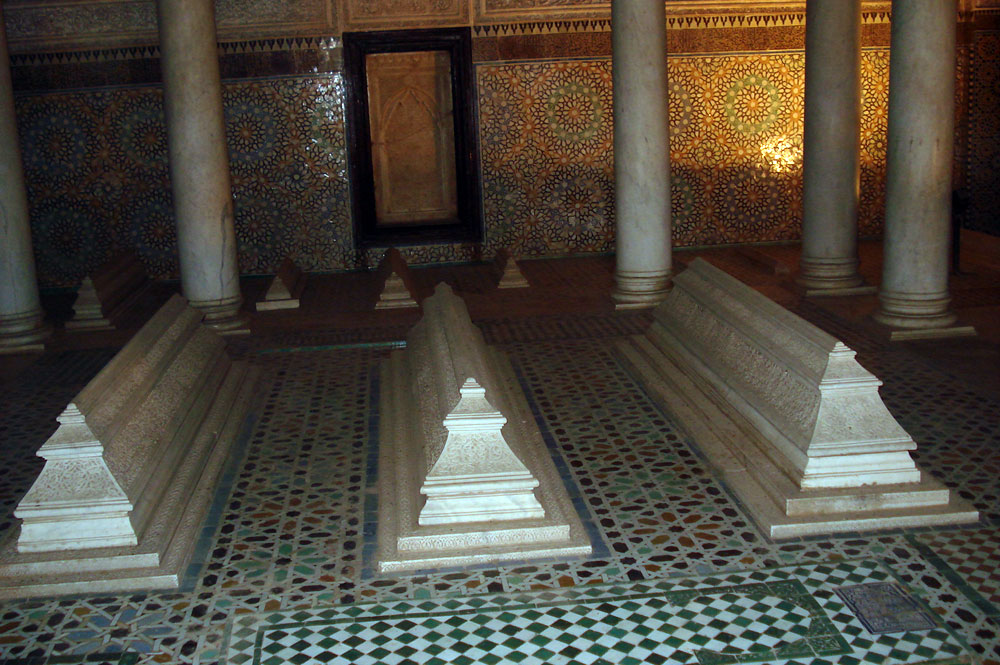
The Saadian Tombs are a historic monument that dates back to the 16th century and is the final resting place of members of the Saadian dynasty, which ruled Morocco from 1549 to 1659.
Over 60 members of the influential Saadian dynasty were buried here. The tombs are open to the public and offer a glimpse into the rich history of Morocco.
The Saadian Tombs consist of three main rooms: the Chamber of the Three Niches, the Chamber of the Twelve Columns, and the Hall of the Twelve Pillars. The walls and ceilings of these chambers are adorned with intricate carvings and beautiful tile work, and the tombs themselves are made of marble and intricately carved cedar wood.
Visitors to the Saadian Tombs can explore the chambers and admire the beautiful architecture and decoration. The site is a must-see for those interested in the history and culture of Morocco.
9. Bahia Palace
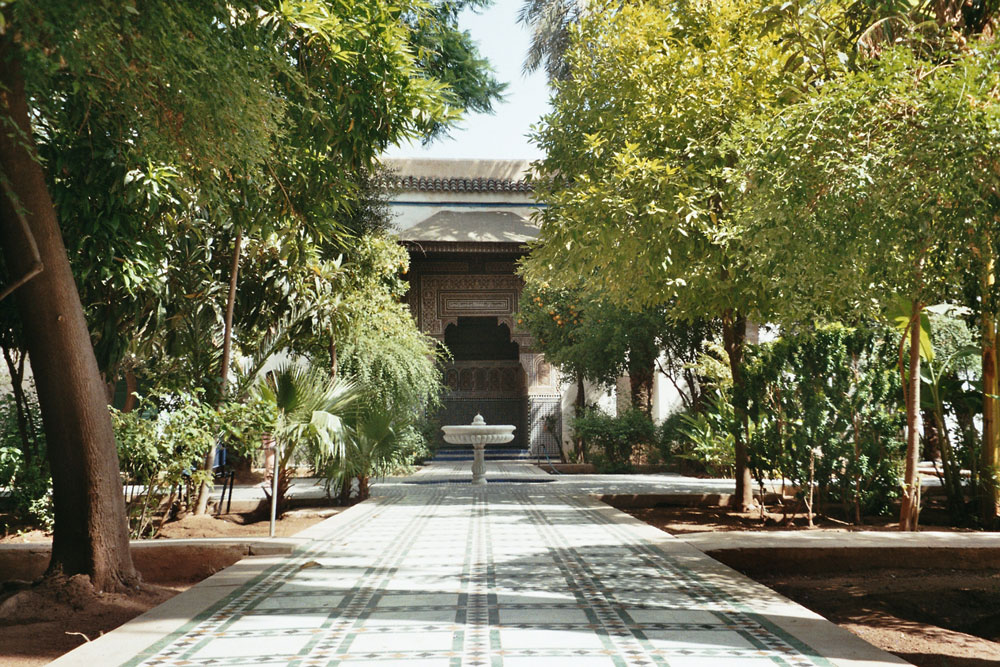
Bahia Palace is a beautiful historic palace in Marrakech, Morocco. It was built in the late 19th century and was once the home of the wealthy Moroccan nobleman, Si Moussa.
The palace features a stunning blend of Moroccan and Islamic architectural styles and consists of a series of interconnected courtyards and rooms, each with its own unique style and decor. One of the highlights of the palace is the Grand Courtyard, which features a beautiful fountain and is surrounded by rooms decorated with beautiful tilework and intricate carvings.
Another notable feature of Bahia Palace is the harem, a section of the palace that was reserved for the women of Si Moussa’s household. The harem features beautiful gardens and courtyards, as well as living quarters and private hammams (bathhouses).
Visitors to Bahia Palace can explore the many courtyards and rooms of the palace, admiring the beautiful architecture and decoration. The palace also features a museum that showcases Moroccan art and artifacts, providing visitors with an opportunity to learn more about the history and culture of Morocco.
10. Hammams
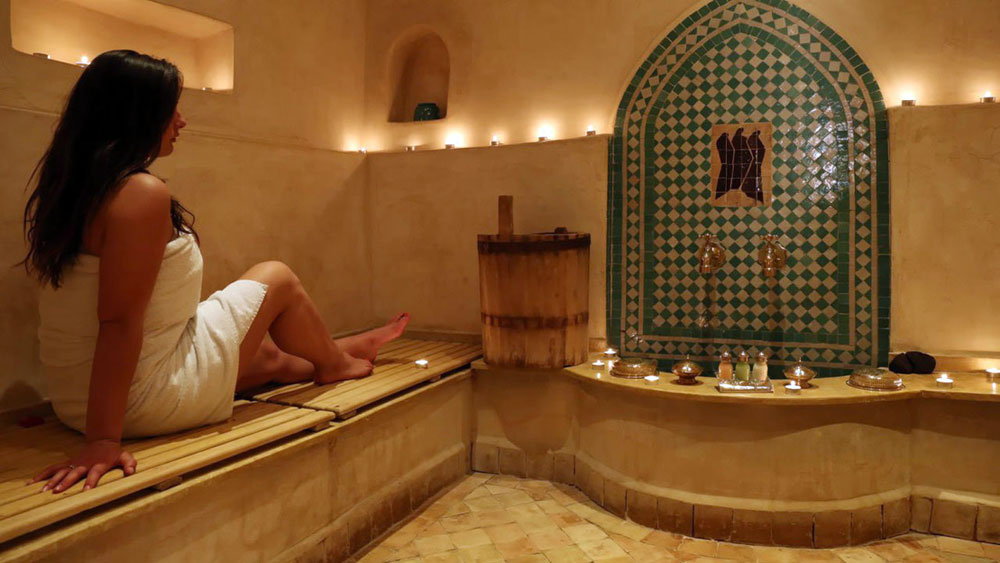
Hammams are traditional public bathhouses that are an important part of Moroccan culture and a popular attraction for visitors to Marrakech. These bathhouses offer a unique and relaxing experience that combines elements of traditional Moroccan culture with modern spa treatments.
The hammams of Marrakech are typically divided into separate sections for men and women, with each section featuring a series of rooms that are designed for different stages of the bathing experience.
The first room is typically a warm or hot room that is used for relaxation and to allow the body to acclimate to the heat.
The next room is a hot steam room, where visitors can experience the detoxifying benefits of steam and have their skin exfoliated with a special scrub made from natural ingredients such as argan oil or black soap.
Finally, visitors can enjoy a refreshing dip in a cold pool or shower, followed by a period of relaxation in a cool room.
In addition to the traditional bathing experience, many hammams in Marrakech also offer spa treatments such as massages, facials, and other beauty treatments. These treatments often incorporate natural ingredients such as argan oil, which is known for its nourishing and moisturizing properties.
Some of the most popular hammams in Marrakech include the Hammam de la Rose, which is known for its luxurious treatments and beautiful decor, and the Hammam Mouassine, which is located in the heart of the Medina and offers a more traditional and authentic experience.
Visiting a hammam provides a unique and relaxing way to immerse oneself in Moroccan culture and indulge in some self-care.

